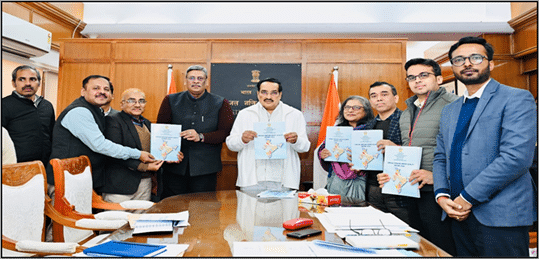Groundwater Quality Report 2024: Key Insights

The Union Minister of Jal Shakti, Shri CR Patil, recently unveiled the Annual Ground Water Quality Report for 2024. This significant report was released on December 31, 2024, and provides a comprehensive assessment of groundwater quality across India. Conducted by the Central Ground Water Board (CGWB), the report aims to guide policymakers and stakeholders in making informed decisions regarding groundwater management. It is the first report to implement a Standard Operating Procedure (SOP) for groundwater quality monitoring, ensuring consistency in data collection and analysis. The use of internationally recognized methods adds credibility to the findings, making this report a vital resource for understanding groundwater quality in the country.
Comprehensive Groundwater Quality Assessment
The 2024 report offers an in-depth analysis of groundwater quality in India. It utilizes a robust dataset collected from over 15,200 monitoring locations, with focused assessments at 4,982 trend stations. This extensive data collection allows for a thorough examination of groundwater quality variations across different regions and time periods. The report includes background monitoring, trend analysis, and hotspot identification, providing critical insights into the state of groundwater resources.
The findings reveal that groundwater quality varies significantly across the country. Some regions experience sporadic contamination from nitrates, fluoride, and arsenic, which poses risks to public health and the environment. The report serves as a scientific baseline for researchers, policymakers, and stakeholders involved in groundwater management. By providing evidence-based findings, it supports informed decision-making aimed at enhancing groundwater sustainability and mitigating contamination risks.
Key Highlights of the Report
Several key highlights emerge from the 2024 Ground Water Quality Report. In terms of cation chemistry, calcium is the dominant ion, followed by sodium and potassium. For anions, bicarbonate is the most prevalent, indicating that the overall water quality in India is of the Calcium-Bicarbonate type. However, the report also identifies areas facing sporadic contamination from nitrates, fluoride, and arsenic.
Seasonal trends in parameters such as Electrical Conductivity (EC) and fluoride levels demonstrate the positive effects of monsoon recharge on groundwater quality. This seasonal variation is crucial for understanding how rainfall impacts water resources. From an agricultural perspective, the analysis of Sodium Adsorption Ratio (SAR) and Residual Sodium Carbonate (RSC) indicates that over 81% of groundwater samples meet safe thresholds for irrigation. However, localized issues with high sodium content and RSC values require targeted interventions to prevent long-term soil degradation.
Implications for Policymakers and Stakeholders
The 2024 Ground Water Quality Report serves as a critical tool for policymakers and stakeholders engaged in groundwater management. The data-driven approach and evidence-based findings provide a foundation for informed decision-making. Policymakers can use this report to develop strategies aimed at enhancing groundwater sustainability and mitigating contamination risks.
The report highlights the need for targeted interventions in regions facing contamination issues. It also emphasizes the importance of monitoring groundwater quality to ensure safe and sustainable water use practices. As groundwater is a vital resource for agriculture, drinking water, and industrial use, understanding its quality is essential for long-term planning and management.
Observer Voice is the one stop site for National, International news, Sports, Editor’s Choice, Art/culture contents, Quotes and much more. We also cover historical contents. Historical contents includes World History, Indian History, and what happened today. The website also covers Entertainment across the India and World.

